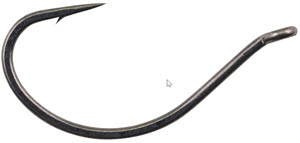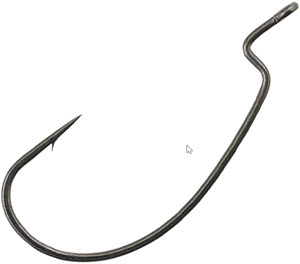As always, my goal is to help you catch more fish! In this blog we’ll review three different ways to hook your bait when you’re drop shotting.
A lot of people think drop shotting means just nose hooking a worm and that’s it. But listen, there are actually three different hook styles that totally change how your bait looks, how it moves, and where you can fish it. I’m going to walk you through all three—what hook to use, the kind of bait that goes best with each, and when to use each style. Let’s dive in!
Nose Hooking: Maximum Action, High Hookup Rates

Let’s start with the classic, nose hooking. This is probably the most well-known way to rig a drop shot. For this, I like using a hook like the Berkley Fusion Drop Shot Hook. It’s a light wire hook with a nice bend and short shank. I carry these in sizes #2, #1, and 1/0 depending on how big my plastic is.
For baits, my number one choice is the Berkley Flat Worm, especially the 3.8-inch model. When nose hooking, you just go about an eighth of an inch into the nose of the bait and come straight out the front. Super simple.
Why use it?
- Maximum action. The bait dances and wiggles with just a little bit of movement or current.
- High hookup percentage. The hook point is exposed, which means when a fish eats it, you’re probably hooking it.
When to use it:
- Open water
- Gravel flats
- Sparse grass
- Clear water or pressured fish
Downside:
- Not great in heavy cover—snags are common
Threaded on a Straight Shank: More Hook, Better Hookups
Next up is threading a straight shank hook. This one’s for when the fish are being weird—you’re getting bites but missing them. Maybe they’re short-striking or nipping the tail. That’s when I switch to a medium wire straight shank hook like the Fusion19 in a #1 or 1/0.
My go-to bait for this style is the Berkley Water Bug. It has a flat bottom, side arms, and an active tail—perfect for threading. You rig it just like a nightcrawler: slide it onto the hook, keep it centered, and pop the hook out halfway through the body.
Why use it?
- Keeps the bait super straight
- Acts like a spine for horizontal presentation
- More hook in the bait, which helps with short strikes and finicky bites
When to use it:
- Vertical drop shotting
- Clear water
- When you’re missing fish with nose hooking
Downside:
- Still an exposed hook, so it’s not great in thick weeds or heavy cover

Texas Rigged: Weedless and Perfect for Heavy Cover
The last one is a game changer—Texas rigging your drop shot. This is for when you’re fishing the gnarly stuff: standing timber, brush piles, heavy grass. For this, I use a medium wire EWG-style worm hook, like the Berkley Fusion EWG, in a 1/0 or 2/0 size.
My favorite bait here is the 4.75-inch Berkley Bottom Hopper in Ike’s Morning Dawn (yep, that’s my color!). To rig it, Texas rig it like normal—go in through the nose, out the chin, twist, and skin hook it so it lays flat and weedless.
Why use it?
Weedless. Great for brush, docks, grass, and any heavy cover
- Keeps your bait horizontal and natural-looking in the water
- Versatile in tough conditions

When to use it:
- Around brush piles
- Inside thick grass (hydrilla, milfoil)
- Under docks or laydowns
Downside:
- Slightly less action, but you can add that back in with a few extra twitches or shakes of the rod
Rod and Reel Setup: Match Your Rig to the Right Gear
Before I let you go, let’s talk about gear real quick. Your rod and reel setup makes a big difference, especially with finesse techniques like drop shotting.
Nose Hooked & Threaded Setups
- Rod: 6’10” Medium Light Spinning Rod
- Model I Use: Abu Garcia Ike Finesse Series 3.0
- Reel:2:1 gear ratio spinning reel
- Line: 6–8 lb fluorocarbon or braid-to-fluoro leader
Texas Rigged Setup
- Rod: 7’4″ Medium Light (gives you leverage in cover)
- Model I Use: Abu Garcia Ike Finesse Series 3.0
- Reel: Same 6.2:1 or higher gear ratio
- Line: Slightly heavier fluorocarbon if in cover
Final Thoughts
So there you have it—three hooks, three methods, and three new ways to catch more fish with your drop shot rig. Don’t fall into the trap of only nose hooking your bait. Think about the situation, the cover, and the bite—and then pick the hook that’s right for the job.
Try them out, and I guarantee you’re going to be a more versatile and successful angler.
______________________________________________________________________

Follow Ike on Facebook, Instagram, X and TikTok for fishing and fun content. Subscribe to Mike’s YouTube channel for access to his educational ‘Ike in the Shop’ videos and his ‘Going Ike’ Adventure series!
















